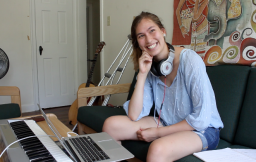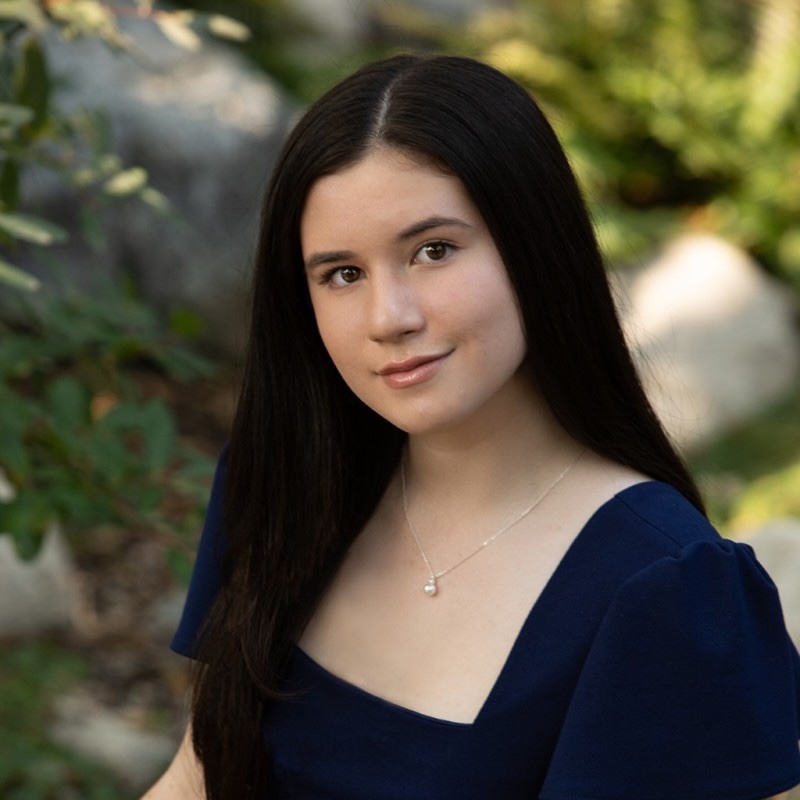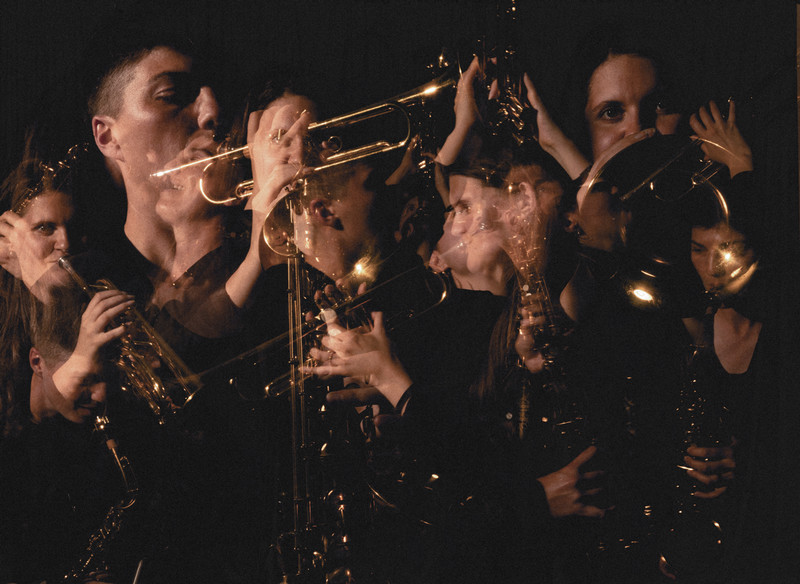Miranda Hall-Aquitania ’18: Composing Music Fit For a Fairytale
By Rebecca Goldfine
Miranda Hall-Aquitania’s first composition for a string trio, “Caught in Amber,” begins by evoking the movement of a summer breeze swirling around a mountain. The middle section of the piece conjures the sound of insects caught up in the wind. The work ends on a pensive, slightly mournful note, the music suggesting the fate of a bug getting trapped in amber.
Hall-Aquitania’s interest in storytelling influences much of the music she writes, whether it’s a pop song she accompanies on guitar or a more classical piece. “My thing, if I were to say I have a thing, is that I am more interested in creating pieces of music that really connect with people than anything else,” the music major said. “I care about creating something that is unique that touches people.”
She prefers that her music be appreciated by children more than any other audience. “I have a deep love for children,” she explained, perhaps borne from being the daughter of kindergarten teacher. “I also think I am very childlike,” she said with a smile.
This summer, Hall-Aquitania received a an Alan M. Christenfeld Fellowship from Bowdoin to focus on creating an original three-movement composition for violin, viola, and cello. Bowdoin offers a number of competitive fellowships each summer that support students who want to immerse themselves in one area of study. About 200 fellows live on campus every summer.
The sound of the sho brings to her mind an image of being caught in sticky stuff, like amber, according to Hall-Aquitania. In the final movement of “Caught in Amber,” when the bug is trapped in amber, the audience, too, becomes suspended in evocative sound.
Hall-Aquitania, who grew up “all over the place” in the US, said in the future she sees herself perhaps composing musical scores for film. During a recent meeting, she pulled up a clip on her phone from one of her favorite movies, Howl’s Moving Castle, to play some of the music from the animated story. The part she played, she explained, is for a scene in which a giant castle walks across the Alps. It is music about “beautiful, magical worlds,” she said.



